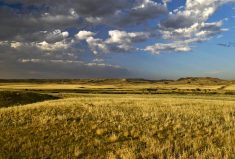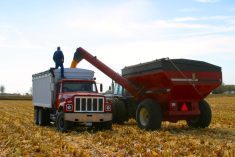Manitoba has a chance to set a precedent with the way it monitors outcomes from the GROW Trust, says Lara Ellis, ALUS Canada’s senior vice-president of policy and partnerships.
Monitoring and evaluation of conservation projects like those under the GROW Trust have “never been that developed,” Ellis said.
The first three projects under the GROW (Growing Outcomes in Watersheds) Trust, a $52-million program to support the protection of wetlands, were announced on October 22. Two of these projects involved expanding ALUS programs — programs that pay farmers to conserve land for its ecological benefits.
Read Also

Mazergroup’s Bob Mazer dies
Mazergroup’s Bob Mazer, who helped grow his family’s company into a string of farm equipment dealerships and the main dealer for New Holland machinery in Saskatchewan and Manitoba, died July 6 from cancer.
The province is working with Manitoba Habitat Heritage Corporation to oversee the fund. MHHC announced the first call for letters of intent for project proposals on January 10.
Those who get funds will be required to report on the outputs the money pays for, a provincial spokesperson said in an emailed statement to the Manitoba Co-operator.
“These outputs will be summarized and converted into GROW Outcomes using calculations based on standardized technical information developed from peer-reviewed and technically supported research,” the spokesperson said.
The province will work with MHHC and the International Institute for Sustainable Development to use those outputs to quantify outcomes — the actual effect on the environment.
Tim Sopuck, CEO of Manitoba Habitat Heritage Corporation, indicated that the metrics they’ll use are still under development.
“It’s the so what? What did you do for the environment?” said Sopuck. “We take that question very seriously.”
Sopuck told the Co-operator that quantifying outputs — acres added to the program, small dams built, riparian areas fenced — is fairly simple. Adding up outcomes — nutrients kept from running into watersheds, water quality increased, carbon sequestered — is a work in progress.
“Some of the things are really hard to measure,” he said.
Every project is slightly different, so it takes a lot of scientific work over many studies to create good models they can use to predict outcomes of any given output.
That science isn’t as far along as he’d like, Sopuck said, adding this can be frustrating.
Ellis said that while studies have measured results of various ALUS projects, they usually centre around one question, like insects or a species at risk.
It’s hard, therefore, to use them to scale up to make assumptions on projects across Canada.
Sopuck said they simply have to rely on the best science they have to determine what they can reasonably expect from a project. For instance, they have studies on the benefits of restoring a wetland from which they can reasonably infer the results of restoring other wetlands.
Both Ellis and Sopuck said they’re confident their programs are producing ecological benefits, regardless of if they can translate those benefits into numbers in a report.
GROW open for proposals
The first call for project proposals under Manitoba’s Growing Outcomes in Watersheds (GROW) program has opened.
The program is funded by two trusts established by the provincial government, the $102-million Conservation Trust, and the $52.0-million GROW Trust that was announced in June 2019. GROW Trust funds will compensate farmers when agricultural lands are committed to conservation purposes.
“This is the beginning of a long-lasting partnership between the province, the Manitoba Habitat Heritage Corporation and, most importantly, Manitoba farmers and other landowners,” said Agriculture and Resource Development Minister Blaine Pedersen.
GROW will be delivered by Manitoba’s Watershed Districts and will provide incentives for landowners to adopt practices that reduce flooding, improve water quality and make the agricultural landscape more resilient to the impacts of climate change.
Incentives will support activities such as wetland conservation and restoration, small water retention structures, riparian area enhancement, conservation buffer strips and perennial cover plantings and other conservation projects that are watershed management plan priorities.
“The goal is to improve watershed resilience to the impacts of a changing climate,” said Pedersen. “These trusts implement our government’s commitments in our Made-in-Manitoba Climate and Green Plan while enhancing sustainable production for Manitoba farmers.”
“The two trusts and the overall GROW framework bring a new dimension to conservation programs in rural Manitoba,” said Tim Sopuck, chief executive officer of the Manitoba Habitat Heritage Corporation. “The new program and the funding approach will deliver important environmental results to Manitobans for generations to come.”
Groups that are eligible to deliver GROW may apply for up to $500,000 in funding. Other groups may consider applying to the Conservation Trust under criteria established in the Watersheds category, where the maximum funding available is $250,000. More information on the proposal process is available on the MHHC website at www.mhhc.mb.ca.
Letters of intent must be submitted by Feb. 14, 2020, to be considered in the first round of proposals.




















